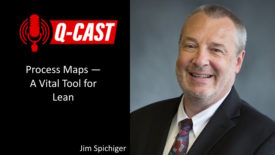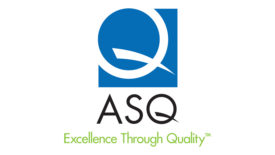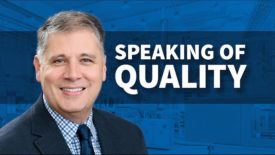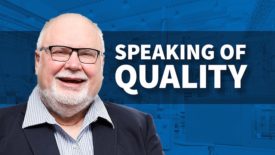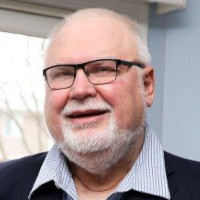Home » Keywords: » Speaking of Quality
Items Tagged with 'Speaking of Quality'
ARTICLES
Speaking of Quality | Lisa El-Shall
While part of the Richmond section, we had an opportunity to work with a local charitable organization to revamp their donations using 5S and Lean Principles.
Read More
Quality Show South
The Quality Show South Preview Podcast: Process Maps—A Vital Tool for Lean
February 9, 2024
Speaking of Quality | Dr. Omer Eltigani
My Unforgettable Quality Journey
This accomplishment was genuinely unforgettable and ignited a profound passion to further develop my knowledge of quality.
January 29, 2024
Speaking of Quality | Jim Spichiger
The Purpose: Achieve Excellence Through Quality
Improvement is at the very core of what quality professionals strive for each and every day.
December 18, 2023
Speaking of Quality | Daniel Zrymiak
Incremental Benefits of ASQ Membership
A select group of ASQ Senior Members, who demonstrate sufficient merit and qualifications, can be nominated as ASQ Fellow Members.
November 27, 2023
Speaking of Quality | Jim Spichiger
My Rip Van Winkle Moment
Upon leaving the Quality Show, I realized that I had just experienced a Rip Van Winkle moment.
September 20, 2023
Speaking of Quality | Denis J. Devos
The Value of Divisions for ASQ Members
The purpose of all of our divisions is to provide a smaller, more dedicated group of like-minded members to support each other.
August 17, 2023
Speaking of Quality | Jim Spichiger
Developing Leadership Skills through ASQ Service
Running a small business is no small task; it requires determination, resourcefulness and skill.
July 25, 2023
Speaking of Quality | Mark Durivage
Competence, Awareness, and Training – Oh My!
Consider preparing the workforce today for the challenges of tomorrow.
June 5, 2023
Speaking of Quality | John Vandenbemden
Auditing vs. Inspection
Even though there are similarities, these tools have different intent.
May 17, 2023
Get our new eMagazine delivered to your inbox every month.
Stay in the know with Quality’s comprehensive coverage of the manufacturing and metrology industries.
SIGN UP TODAY!Copyright ©2024. All Rights Reserved BNP Media.
Design, CMS, Hosting & Web Development :: ePublishing


